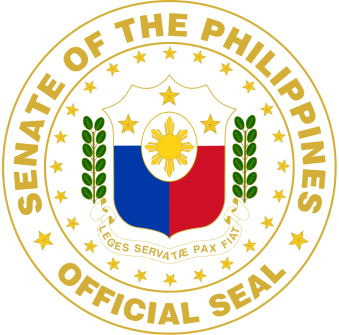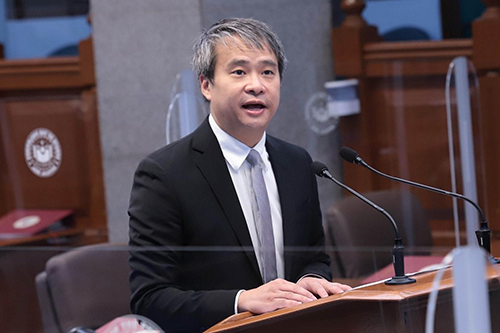
Villanueva bats for COVID hazard pays, risk allowance for all healthcare workers
All healthcare workers should all be given hazard pays and allowances for risking exposure to COVID-19 every day in private and public health institutions, Senator Joel Villanueva said today.
At the Senate hearing on Senate Bill No. 2371, or the Benefits for Healthcare Workers Act, Villanueva not only endorsed a proposal doubling the Special Risk Allowances (SRA) and Active Hazard Duty Pay (AHDP) for healthcare workers, but also suggested that the measure widen the reach of the benefits to include non-medical HCWs.
“We are suggesting that we broaden the scope of the bill to include the non-medical healthcare workers,” Villanueva, chair of the Senate labor committee, said during the hearing.
Medical HCWs include doctors, nurses, nursing assistants, medtechs, midwives, radtechs, pharmacists and caregivers. Non-medical HCWs, meanwhile, are those who work in private and public health institutions such as barangay health workers, admin staff, utility workers, social workers, dietary staff, security guard, drivers and hospital employees.
“Non-medical healthcare workers are also at risk of contracting COVID-19 in the workplace since they won’t know sino ang may COVID sa mga naka-interact nila. Airborne yung virus and highly transmissible ang Delta variant,” Villanueva said.
The lawmaker added that saying non-medical HCW are not entitled to SRA and AHDP ignores the reality that they are also at risk of getting the COVID-19 virus in the workplace.
In fact, Villanueva said, the case fatality rate of non-medical HCWs are not far behind that of medical HCWs.

“I believe that our priority should be our health workers, their benefits and their health and safety. How is it so hard for us to realize that? So, if you will allow me to make a suggestion: Unahin ang proseso ng pag-download ng pondo sa mga ospital. Tingnan po natin kung mas mapapadali kung fixed at hindi pro-rated ang mga benepisyo.”
Citing DOH data, the case fatality rate of nurses is 1% while doctors is at 0.3%. Although the numbers are far less than their medical HCW counterparts, the fatality case rate for hospital employees is at 4.3%, 1.1% for admin staff and 0.7% for barangay health workers."
Villanueva likewise noted that the latest COVID-19 case tally of non-medical HCWs reached 2,157 of the 24,895 cases of all HCWs, or about 8.7% of the total COVID-19 cases of HCWs.
Villanueva stressed the need to make evidence-based and data-driven policy decisions, starting with accurate and reliable data on the number of healthcare workers. While DOH counts 526,727 HCWs in its initial computation of the needed COVID-19 benefits, the total number of HCWs could be higher, he noted.
“With reliable data, we can also determine how much will be needed for other benefits, such as COVID-19 claims and meals, accommodation, and transportation allowances,” Villanueva said.
On addressing delays in the release of the SRA and AHDP, Villanueva said there are ways to expedite the process if priority is given to medical frontliners.
“I believe that our priority should be our health workers, their benefits and their health and safety. How is it so hard for us to realize that? So, if you will allow me to make a suggestion: Unahin ang proseso ng pag-download ng pondo sa mga ospital. Tingnan po natin kung mas mapapadali kung fixed at hindi pro-rated ang mga benepisyo,” Villanueva said.
“Pag-aralan rin po natin kung mas magiging effective kung idadaan sa DOLE ang pagbibigay ng mga benepisyo sa mga private healthcare workers. Let us not allow bureaucratic procedures to get in the way of our fight against COVID-19,” he added.
